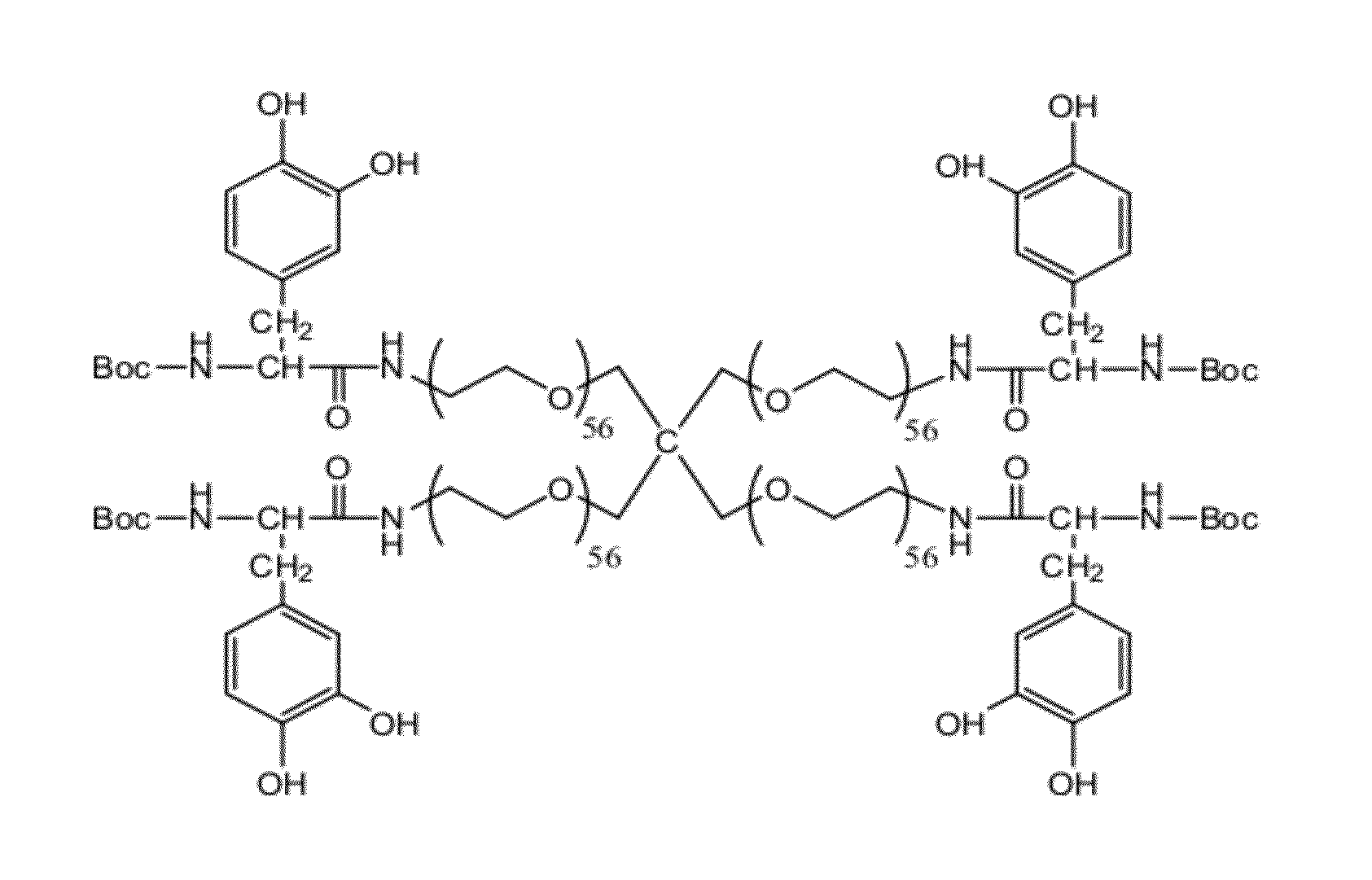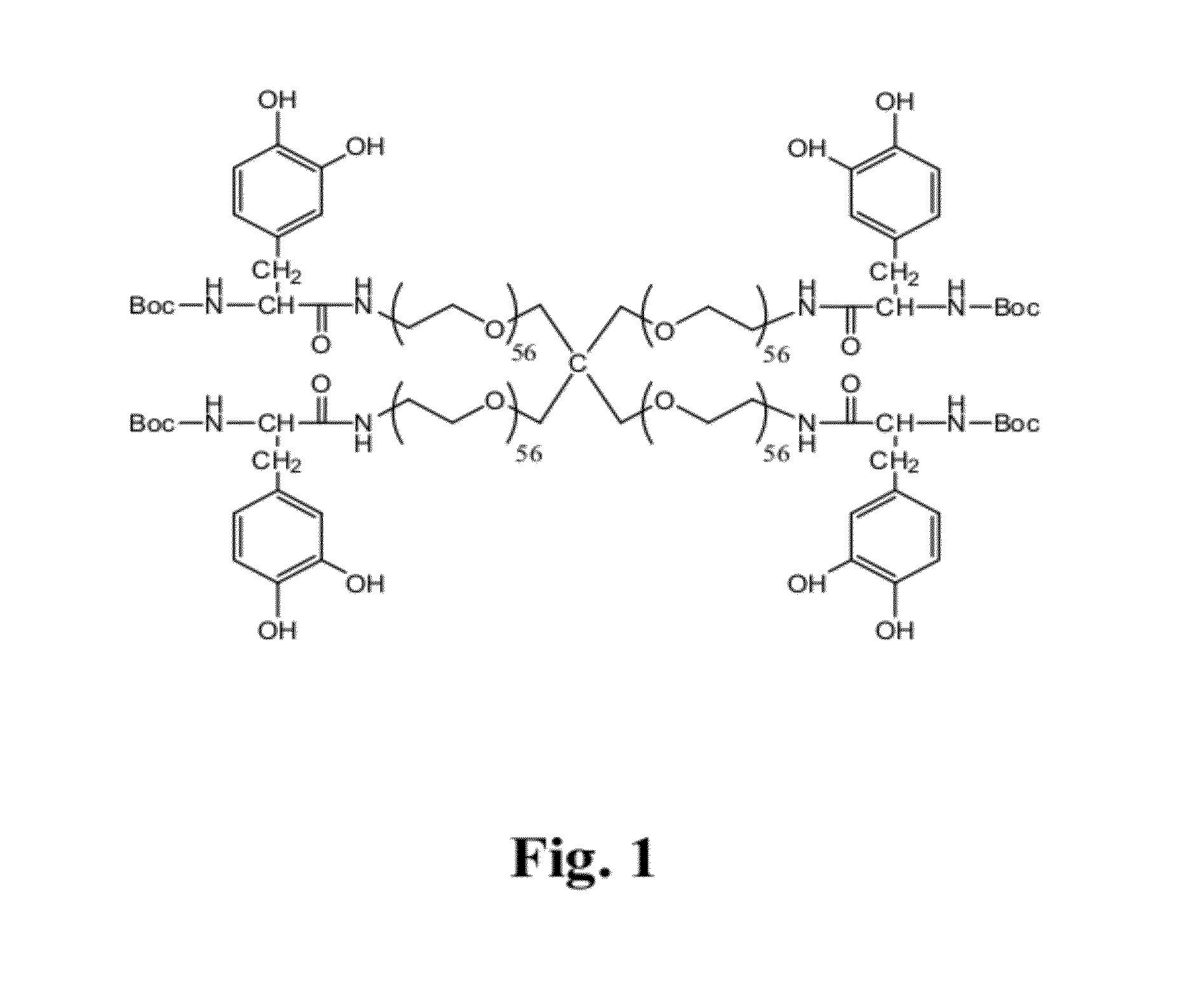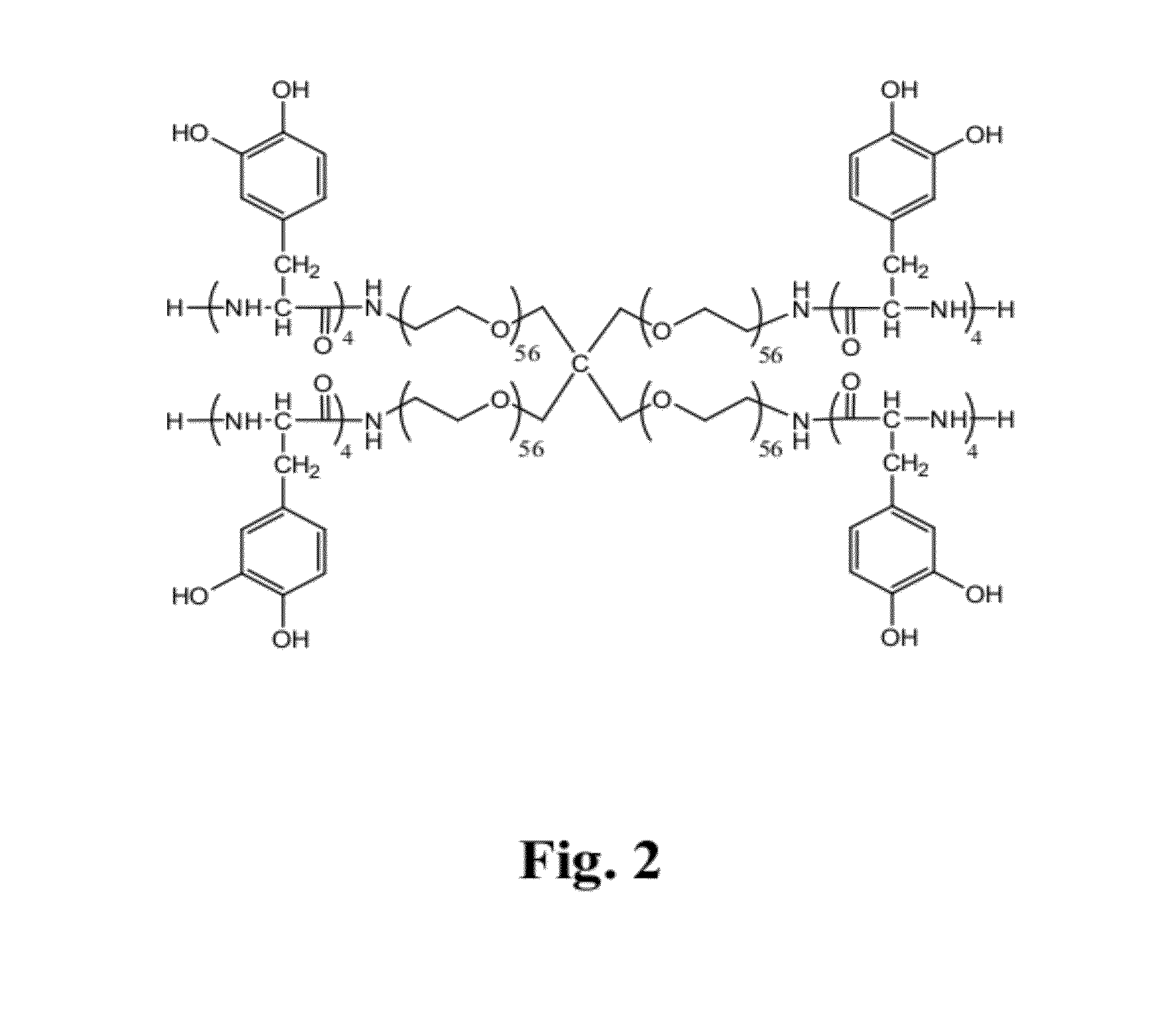Adhesive compounds and methods use for hernia repair
a technology of adhesive compounds and adhesives, applied in the field of new synthetic medical adhesives, can solve the problems of poor tissue adhesion characteristics, stiffness and brittle mechanical properties, and achieve the effect of inhibiting or reducing the growth of biofilms (bacteria)
- Summary
- Abstract
- Description
- Claims
- Application Information
AI Technical Summary
Benefits of technology
Problems solved by technology
Method used
Image
Examples
experimental example 1
Topical Wound Closure in the Rat
[0244]Using a “bilateral” incision wound model on the dorsal surface of the rat (Oxlund et al, J Surg Res, 1996; 66:25-30, Jorgensen et al., J Surg Res, 1995; 58:295-301) healing across an incision site whose ends are opposed with a bioadhesive was investigated by measuring the tensile failure properties of incision sites treated with two formulations of a bioadhesive, and comparing this with the failure properties of incisions repaired with a representative commercially available cyanoacrylate adhesive (Dermabond), and with suture alone. Wound site healing was also qualitatively assessed using histology.
Experimental Design:
[0245]48 Sprague-Dawley rats (350-399 g) were tested. The dorsal skin was shaved, and the skin prepped for surgery. Two 5-cm long incision wounds were made 15 mm from and parallel to the dorsal midline, and centered on the thoracolumbar junction. The incisions were made perpendicular to the skin surface, and through the epidermis, ...
experimental example 2
Suture Line Sealing on a PTFE Vascular Graft
[0253]The purpose of this study was to evaluate the biocompatibility of the test articles, as well as the ability of the test articles to prevent blood loss in vascular applications in the canine model. The performance of the test articles were compared to CoSeal™.
TABLE 4ARTICLELOT NUMBEREXPIRATION DATECoSeal060842July 2008Medhesive CV SLOWGEL90843Dec. 05, 2008Medhesive CV FASTGEL91352Dec. 05, 2008
[0254]8 adult mixed breed dogs, weighing an average of 28.6±1.7 kg were purchased from Covance Research Products, Kalamazoo, Mich. The study design is shown in Table 5.
TABLE 5Ani-malMETHOD OF ACHIEVINGNum-VASCULAR REPAIR HEMOSTASISNEC-berLeft femoral arteryRight femoral arteryROPSY1CoSealMedhesive CV SLOWGELDay 142CoSealMedhesive CV FASTGELDay 143Medhesive CV SLOWGELMedhesive CV FASTGELDay 144Medhesive CV FASTGELMedhesive CV SLOWGELDay 145Medhesive CV SLOWGELCoSealDay 146Medhesive CV FASTGELCoSealDay 147Medhesive CV FASTGELMedhesive CV SLOWGELDay...
experimental example 3
Adjunctive Sealing of Gastrointestinal Tissues
[0259]Medhesive-113 was formulated at varying concentrations with varying amounts of poly vinyl alcohol (PVA) added. The formulations used applied over a ˜3 mm defect in a segment of porcine small intestine secured with a single suture. The formulation was allowed to cure for 10 minutes under ambient conditions. The tissue / adhesive test assembly was conditioned in a saline bath for 1 h. After the conditioning period the segment was pressurized with air (FIG. 228) and the maximum pressure withstood was recorded (FIG. 229). The addition of PVA to the formulation made the resulting adhesive surprisingly elastic and the formulations containing higher amounts of PVA were more extensible and resisted higher pressures than those with less of no PVA added.
PUM
| Property | Measurement | Unit |
|---|---|---|
| Volume | aaaaa | aaaaa |
| Volume | aaaaa | aaaaa |
| Volume | aaaaa | aaaaa |
Abstract
Description
Claims
Application Information
 Login to View More
Login to View More - R&D
- Intellectual Property
- Life Sciences
- Materials
- Tech Scout
- Unparalleled Data Quality
- Higher Quality Content
- 60% Fewer Hallucinations
Browse by: Latest US Patents, China's latest patents, Technical Efficacy Thesaurus, Application Domain, Technology Topic, Popular Technical Reports.
© 2025 PatSnap. All rights reserved.Legal|Privacy policy|Modern Slavery Act Transparency Statement|Sitemap|About US| Contact US: help@patsnap.com



